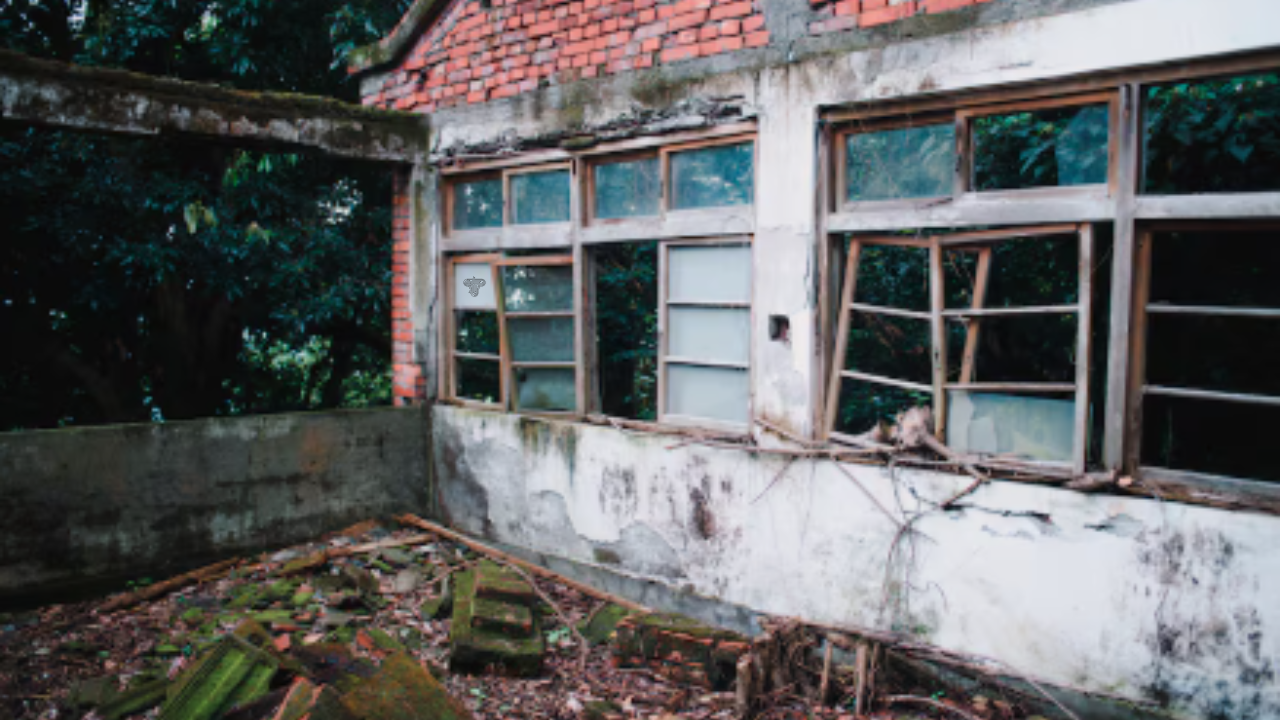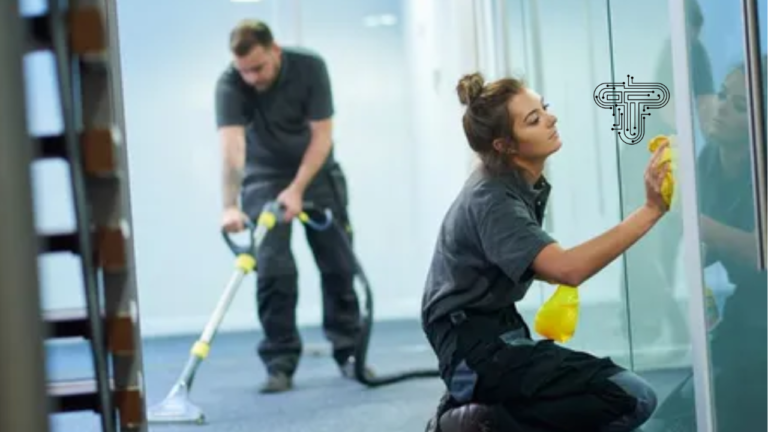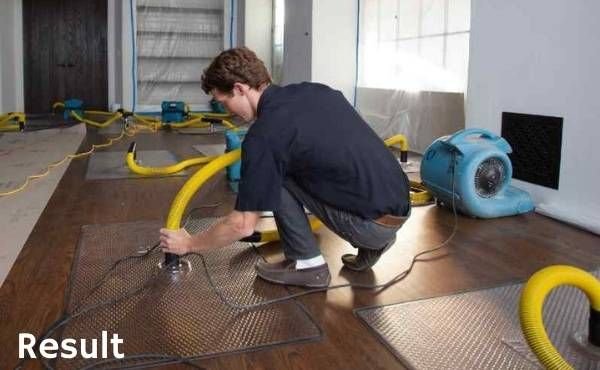The Grime That’s Slowly Damaging Your Home’s Exterior
Most homeowners view dirty siding or stained concrete as purely cosmetic. It looks bad, but the assumption is that it’s surface dirt that doesn’t affect anything structural. That assumption is wrong in ways that can become expensive over time. The debris accumulating on exterior surfaces isn’t just making things look dingy—it’s actively causing damage that worsens the longer it remains.
The tricky part is that this damage happens slowly. A year of buildup doesn’t create obvious problems. But five years, ten years of letting organic growth, stains, and grime accumulate? That’s when homeowners start seeing real issues that go beyond aesthetics and begin to affect the actual materials and structures.
What Mildew and Algae Actually Do
Those dark streaks on the siding aren’t just discoloration; they’re also a sign of potential damage. Mildew and algae are living organisms that feed on the materials on which they’re growing. They retain moisture against surfaces, creating conditions that promote rot in wood siding or degrade paint and protective coatings on other materials. The longer they’re left to grow, the deeper they penetrate into the substrate.
Vinyl siding gets brittle when organic growth is allowed to persist. The organisms produce acids as part of their metabolic process, and these acids slowly break down the plastic polymers. What starts as a cleaning issue turns into a replacement issue when siding that should last decades begins to crack and become porous after just ten or fifteen years.
Wood siding has it worse. Mildew doesn’t just stain wood—it digests it. The dark discoloration visible on the surface indicates fungal growth that extends into the wood fibers. This compromises the structural integrity of the boards and accelerates rot, especially in areas that stay damp. Paint peels faster when mildew is present underneath because the growth interferes with adhesion.
Brick and stone aren’t immune either. Algae and moss growing on masonry hold moisture against the surface, which leads to efflorescence (those white salt deposits) and can cause freeze-thaw damage in colder climates. The moisture trapped by organic growth seeps into tiny cracks, expands when it freezes, and gradually breaks apart the masonry.
The Concrete Problem That Gets Ignored
Driveways and walkways accumulate more than just dirt. Oil stains, rust marks, organic growth in shaded areas, and general grime create a surface layer that not only looks unappealing but also affects the concrete itself. Oil penetrates concrete and breaks down the binders that hold the aggregate together, leading to surface degradation and pitting.
Algae and moss on concrete do the same thing they do everywhere else—they retain moisture and produce acids. Concrete is porous, so this moisture gets pulled into the material where it can cause internal damage. In freeze-thaw climates, this moisture expansion is what creates spalling (when the surface layer flakes off) and those annoying potholes that form in driveways.
The problem compounds because once the surface is compromised, more moisture seeps in, which creates further damage, allowing even more moisture to penetrate. What starts as a cosmetic issue with some staining becomes structural when the concrete surface begins to break apart. At that point, cleaning doesn’t fix it—resurfacing or replacement does, and that’s where costs really add up.
Regular removal of surface contaminants prevents this progression. Tools designed for this kind of deep cleaning, such as a pressure washer, can strip away the buildup before it penetrates deeply enough to cause permanent damage. The key is to address it before the damage has already been done to the underlying material.
Gutters and Downspouts Creating Hidden Damage
Gutters that aren’t regularly cleared don’t just overflow—they create water damage patterns that affect multiple parts of a home’s exterior. When gutters overflow, water runs down the siding instead of being directed away from the foundation. This constant water exposure accelerates the deterioration of whatever surface it’s hitting.
Wood trim around windows and along rooflines rots faster when subjected to regular overflow from clogged gutters. Even vinyl or composite materials degrade more quickly when exposed to constant water. But the bigger issue is what happens at ground level where that water is landing.
Foundation walls become saturated when gutter water is not directed away properly. This can lead to basement leaks, foundation cracks, and soil erosion around the base of the home. The staining visible on foundation walls from gutter overflow is a symptom of a problem that’s causing damage both above and below the visible waterline.
Downspouts that dump water too close to the foundation create similar problems. Even when gutters are clear, if downspouts don’t extend far enough away from the house, water saturates the soil right at the foundation. Over time, this causes settling issues, cracks, and moisture problems that are expensive to remediate.
What UV Damage and Pollution Add to the Mix
Sunlight doesn’t just fade paint—it breaks down the molecular structure of almost every exterior material. However, when grime, dirt, and organic growth accumulate on surfaces, UV damage accelerates. The contaminants absorb heat, which intensifies UV degradation of the materials underneath. Paint chalking (the powdery residue that comes off when you touch it) occurs more quickly on dirty surfaces.
Air pollution adds its own layer of damage. In urban and industrial areas, airborne pollutants settle on exterior surfaces and create acidic conditions when they come into contact with water. This acid slowly etches surfaces and breaks down protective coatings. What appears to be a thin layer of city grime is actually a corrosive layer that’s eating away at paint, sealants, and even the surfaces themselves.
The combination of UV exposure and pollution creates damage that pure time alone wouldn’t cause. A home in a clean, rural environment might go years between exterior maintenance and look fine. The same home in an urban area with industrial pollution needs more frequent cleaning to prevent accelerated degradation.
The Real Cost of Deferred Cleaning
Waiting too long to address exterior grime doesn’t just mean more stubborn cleaning later—it may even necessitate material replacement in some cases. Siding that could have been cleaned needs replacement. Concrete that could have been restored needs resurfacing. Paint that could have lasted another five years needs redoing in two.
The math isn’t complicated. Professional exterior cleaning for a typical home might cost a few hundred dollars. Replacing sections of damaged siding, repairing concrete, or repainting years ahead of schedule costs thousands. The financial case for preventive maintenance is clear, but most people don’t make the connection until damage is already visible.
There’s also the compounding factor that once materials are compromised, they deteriorate faster. A small area of rot in siding spreads to adjacent boards. A crack in concrete gets bigger every winter. The damage accelerates once it starts, which means the window for cost-effective intervention closes fairly quickly.
Seasonal Factors That Accelerate Problems
Different times of year create different types of damaging buildup. Spring brings pollen that, while it seems harmless, creates a sticky layer that traps other contaminants and holds them against surfaces. Summer growth of algae and mildew happens fast in humid conditions. Fall means organic matter from trees accumulating on every horizontal surface and many vertical ones. Winter freeze-thaw cycles take whatever moisture is present and turn it into a destructive force.
The seasonal nature of these problems means that annual cleaning doesn’t fully address the issue. Buildup that occurs in the fall and persists through winter has months to cause damage before spring cleaning takes place. Algae that starts growing in late spring has all summer to establish itself before fall attention.
Focusing more frequently on high-risk areas makes sense from a damage prevention standpoint. Shaded areas prone to organic growth, surfaces under trees that accumulate debris, areas where gutters overflow—these need more than once-a-year attention to prevent long-term problems.
Tech Blaster
Prevention Versus Remediation
The frustrating thing about exterior damage from accumulated grime is how preventable it is. Regular cleaning isn’t difficult or particularly time-consuming, especially compared to the effort involved in repairing or replacing damaged materials. But it requires actually doing it before the damage is obvious.
Most people operate on a reactive maintenance schedule—they address problems when they become noticeable. For exterior surfaces, by the time the problem is noticeable as damage rather than just dirt, prevention is no longer an option. The shift from maintenance to repair has already happened.
Building exterior cleaning into regular home maintenance before surfaces look terrible prevents this shift. Cleaning surfaces that look only slightly dirty may feel unnecessary, but that’s exactly where prevention works best. Once surfaces look obviously filthy, damage is already underway.
The goal isn’t a perfect-looking exterior at all times—it’s preventing the grime buildup from sitting long enough to cause material damage. There’s a big difference between cleaning for appearance and cleaning for preservation. Both matter, but the preservation angle is what protects the actual investment in the home rather than just the curb appeal.







